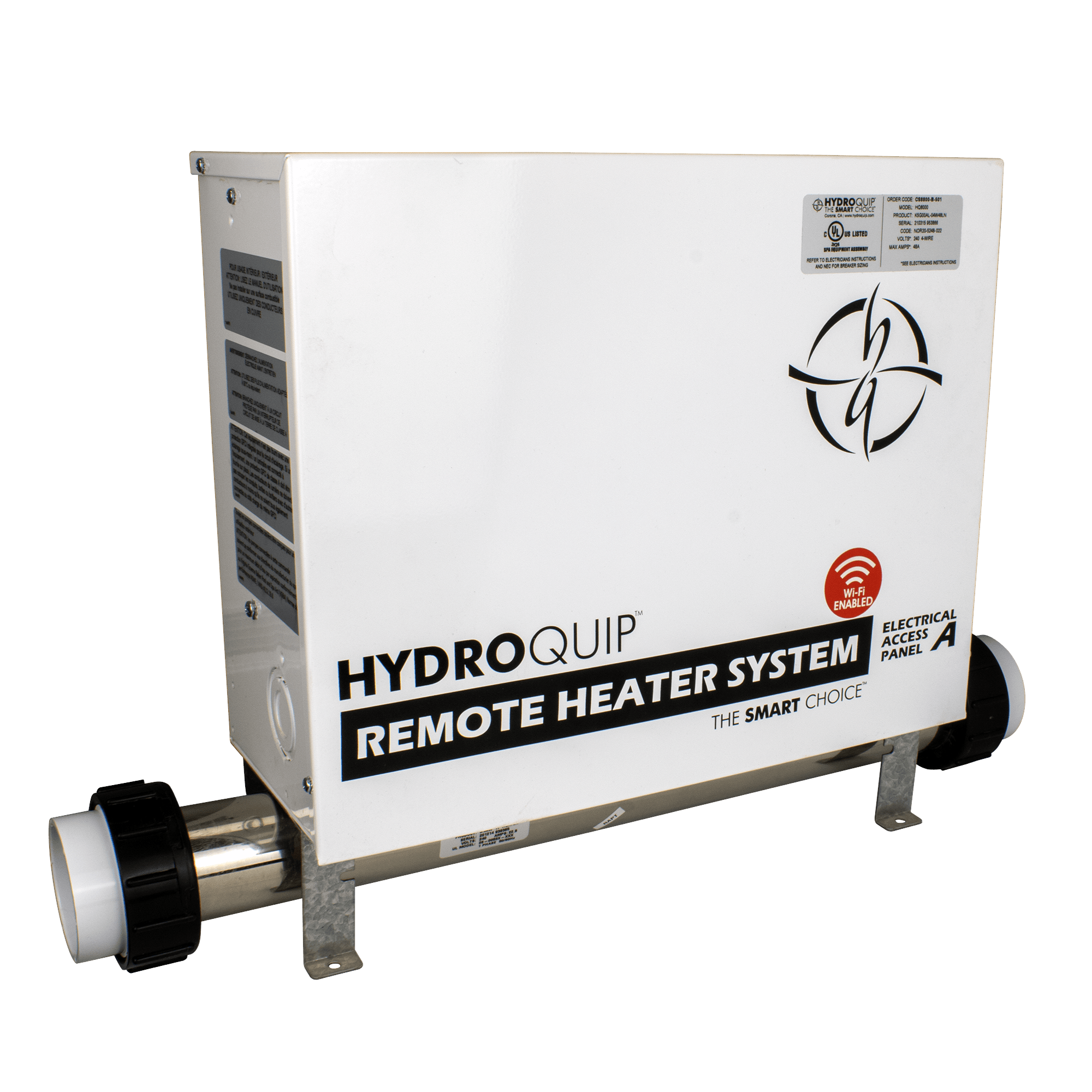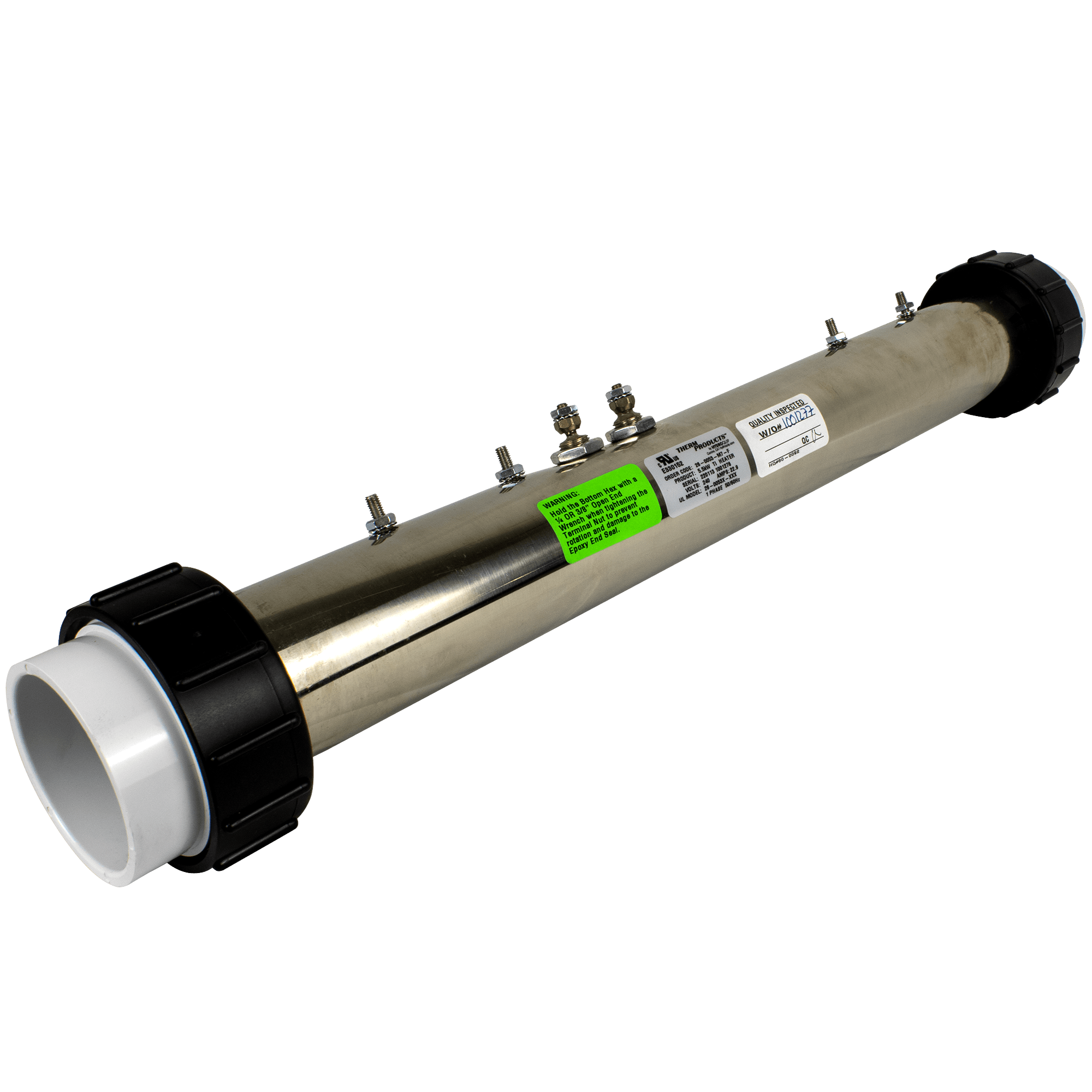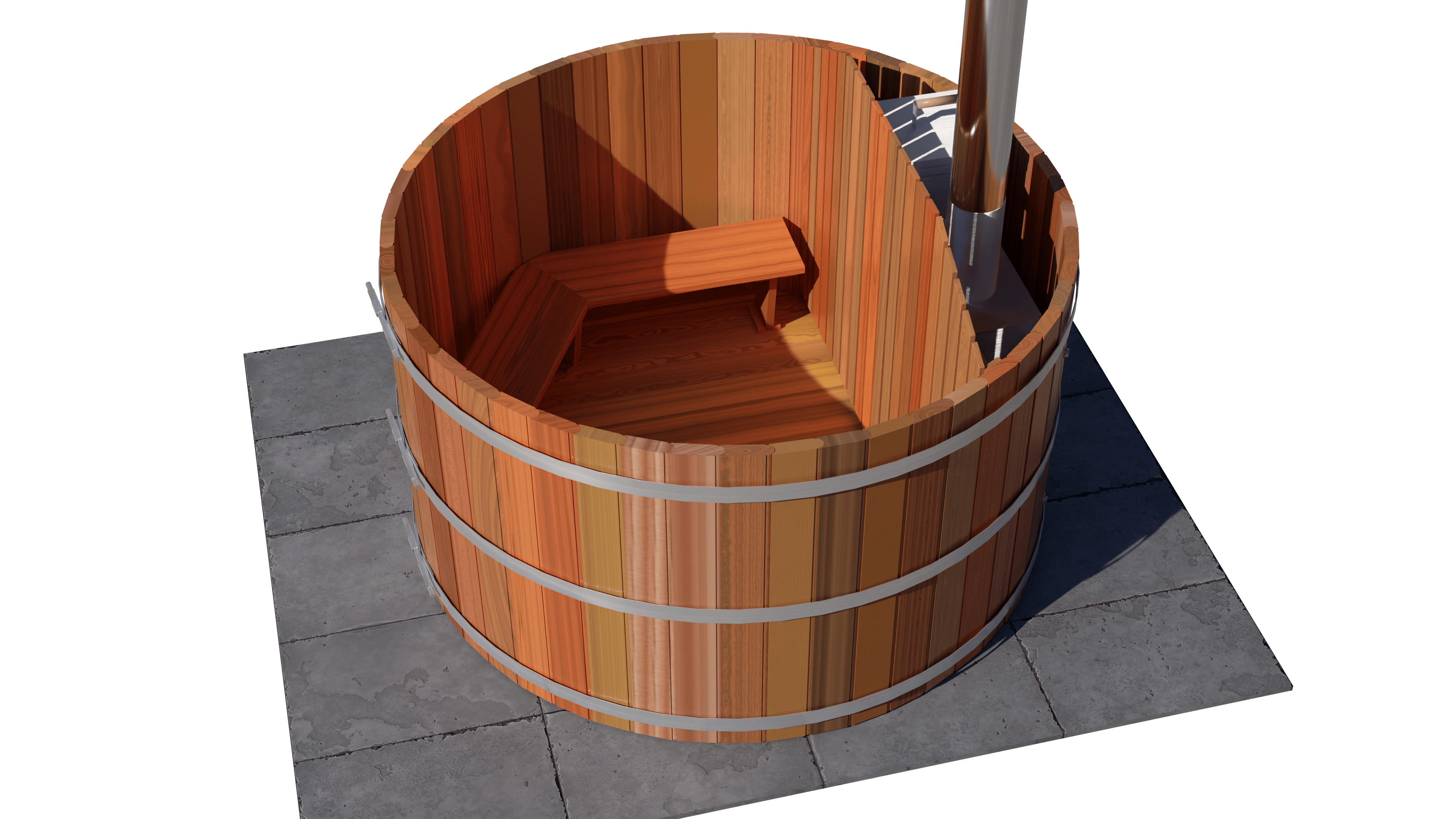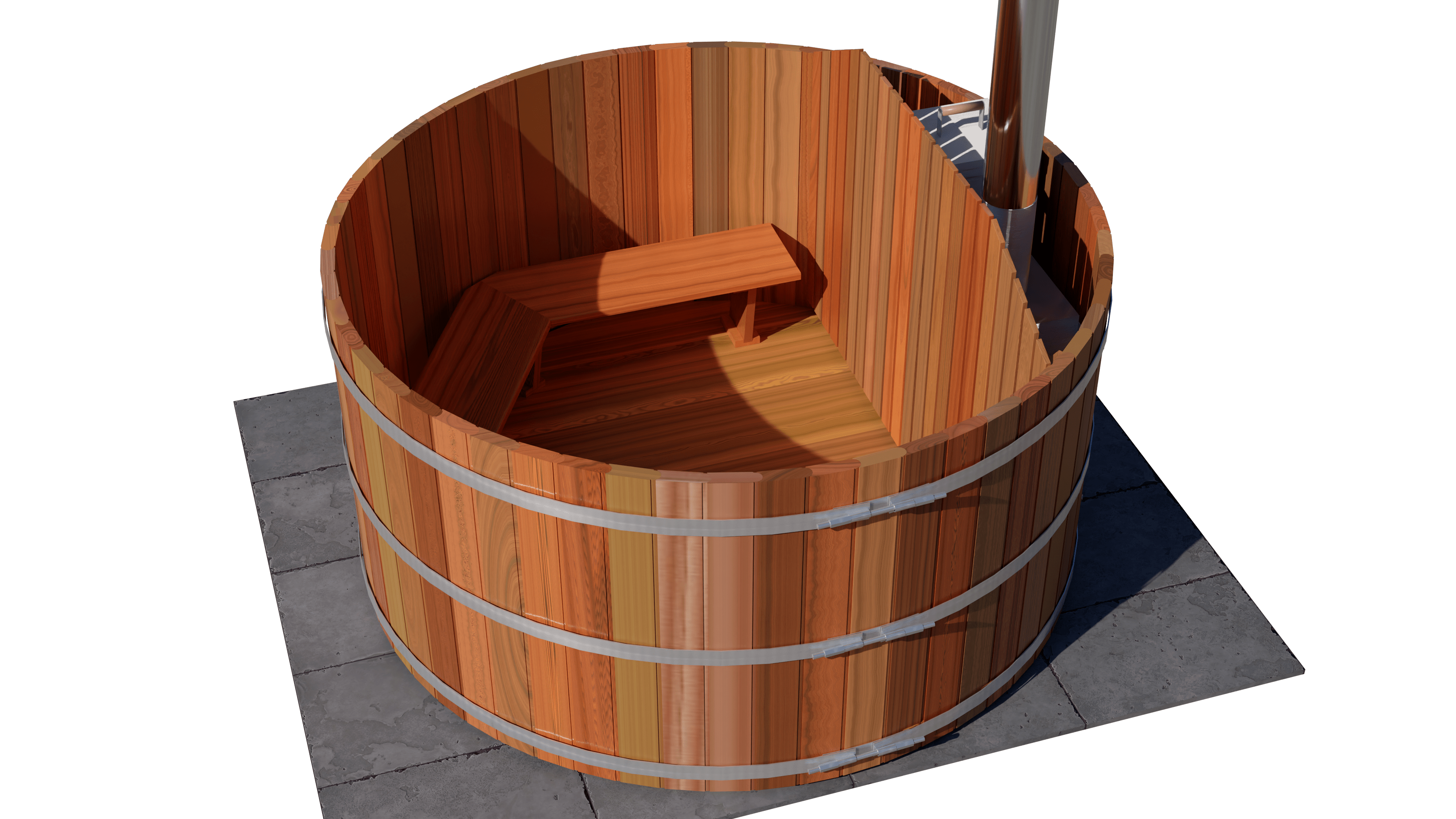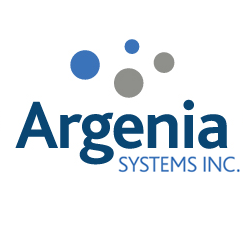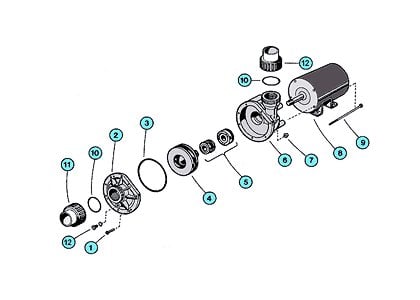Pumps Basics 101
Pumps Basics 101
Hot Pump Basics
The hot tub pump is a necessary component on all hot tubs and spas. The pumps primary function is to circulate the water in the hot tub. There are normally two stages of water flow. One is called the circulation cycle whereby the pump generally spins at a lower RPM (around 1,750). This stage allows water to move though the filter system thereby cleaning the water with each cycle. This lower speed circulation cycle is also for heating the water. Water will pass though over the heating element and depending on its setting will increased in temperature through the heating element.
A second speed is used for jet action (approx. 3450 RPM). This speed will depend on the HP rating of the pump and the number of jets hooked up to the pump. The jet action can be done either by a separate hot tub pump or a pump that has two speeds. If an independent pump is used the system will have a circulation pump and a jet pump. Most tubs use 2 speed pumps whereby low speed is the circulation and high speed is the jet action. For very large tubs with many jets, 2 or more jet pumps may be used to power the jets.
Pumps are rated according to HP however the actual performance of a pump will vary according to various factors such as the number of jets and their flow rate (Gallons per Minutes) as well as the amount of head pressure. A pump that is placed lower than the bottom of a tub will have to work harder than one that is placed at ground level. This is because the head pressure is greater. Most pump manufacturers will have stated pump curves. It is important that you select a pump based on these curves. Adding a larger pump may not always be the solution to more jet pressure. See a sample of flow curve.
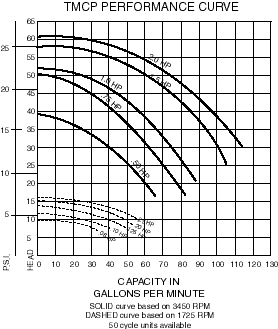
Assembly Parts
A hot tub pump consists of two major components. The 1st component is the pump motor. This is the large cylinder that is contains the electronics. The power cable is attached directly to the pump motor.

The other component is known as the wet end or pump head. This is the part of the pump that moves the water throughout the hot tub. The pump head will contain two ports. One will be the suction port and the other will be the discharge port. Water is sucked into the suction port and expelled through the discharge port. Inside the pump head is an impeller that is connected to the drive shaft of the motor. The size of the impeller and the speed it rotates at will affect the strength of the water flowing through the jets.
|
||||
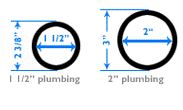
To determine the size of ports your tub has you should measure the opening. Generally, there are two main port sizes 1 ½” and 2”. These can be measured by the using a tape measure as in the diagram (may not be exact).
Leaking Pump Seal
The pump seal is water lubricated bearing that separates the wet end from the pump shaft. A leaking pump seal is perhaps the most common failure of a spa pump. A leaking pump seal needs to be fixed immediately as it will lead to further component failure if the leaking water gets into the pump motor or spa controller. To replace the seal, you must 1st remove the pump head. You will need to unscrew the bolts at the back of the pump motor. These are long bolts that go through the length of the pump motor and screw into the pump wet end. Once the pump head is removed, new seals can be installed. It is important to note that leaking seals are the 1st sign of pump deterioration. You may find that the time and money to repair a seal are signs of further problems. You may want to consider a new pump entirely rather than sinking money into an older pump.
Wiring and Power
NOTE: Before any wiring is attempted you should ensure the main breaker is shut off. If you are not familiar with electrical wiring you should consult a professional!
Hot Tub pumps comes two power sources 110-120 VAC or 220-240 VAC energy consumption. Depending on whether the pump is a one speed, or two speeds will determine how many wires there are. Most two speed pumps will have 4 wire: red, black, white, and green. The red is normally the low speed and black is high speed; white is common and green is ground. Your pump should have a diagram for you to follow. If the pump runs on high speed when it should be on low, then chances are you have the pump wires (black and red) reversed.
Calculating the power of a pump
WATTS=AMPS x VOLTS. Amperage is important to note on you pump as the total amperage of your pump plus that of your spa pack or heater will determine both the wire size and the GFCI breaker size you will need. A 5.5 Kw heater at 220 V will draw approx. 25 amps (5500/220=Amps). If your pump is rated for 8.0 amps 220 VAC, you will need to go with a breaker larger than 33 Amps. Note a 115 Volt pump drawing 16 amps would use the same power as a 230 Volt pump using only 8 Amps
Common Pump Problems
|
Question
|
Suggestions
|
|
My pump leaks water?
|
95% of the time this is caused by a leaking water seal at the pump shaft. However you can also check the pump housing itself for leaks. Don’t overlook the obvious of a loose pump union or broken union seal.
|
|
My pump hums but won’t turn?
|
This can be many things however the two most common problems are a block or clogged impeller. Using a screw driver see if the impeller will turn? Anther common failure is the starting capacitor build into the pump motor has failed. Look for the obvious such a closed gate or ball valve.
|
|
My pump comes on high speed not low speed?
|
This is a common sign of incorrect wiring. Normally the high and low are revered. Check the wiring diagram and ensure the proper wires are connected both inside the motor and at the spa pack
|
|
My pump makes a lot of noise?
|
Motor bearings are gone. If your pump sounds like it is making more noise than usual, it could be internal in the motor. A seized bearing will make the pump louder than normal. Also ensure the pump is securely fastened to the base (use 1 ½” lag bolts). A loose pump will vibrate and sound louder than if it is secured properly
|
|
My pump gets very hot?
|
A pump motor will generate lots of heat. This is normal. However just like a car, a pump can overheat if it is not operating properly. Blockages or clogged filters will make the pump work harder that it needs to. Clean filter often!
|
|
Other Problems
|
CALL 1 800 759 890
|

